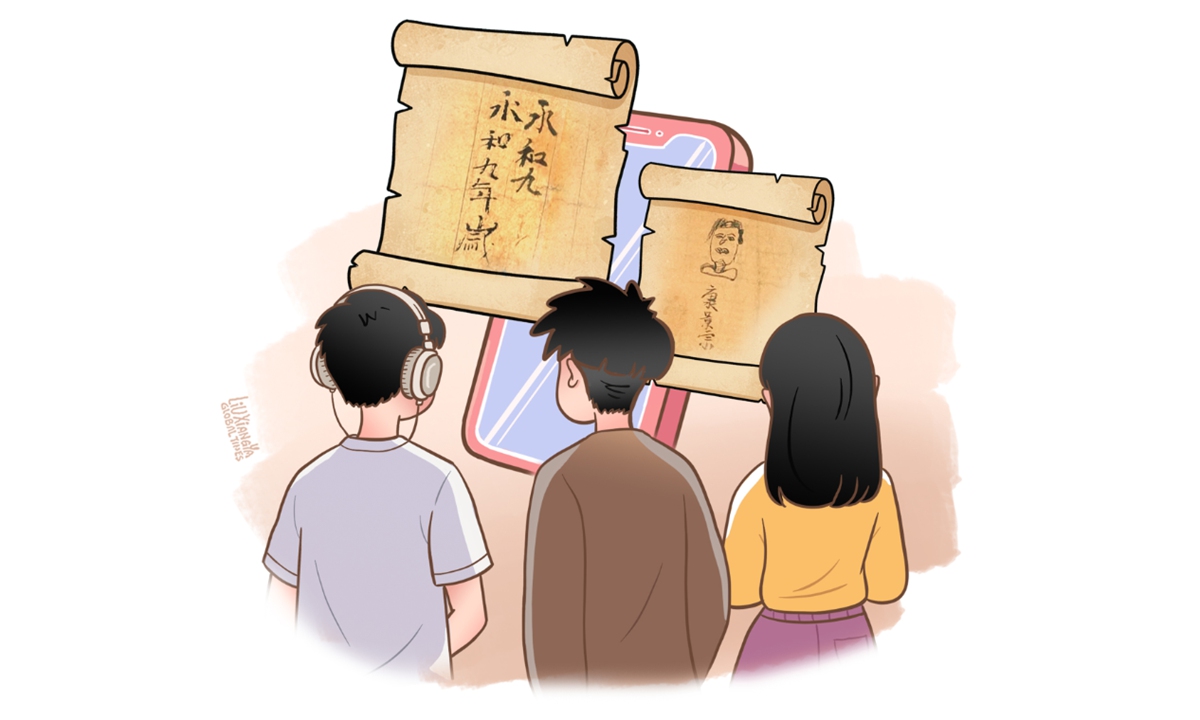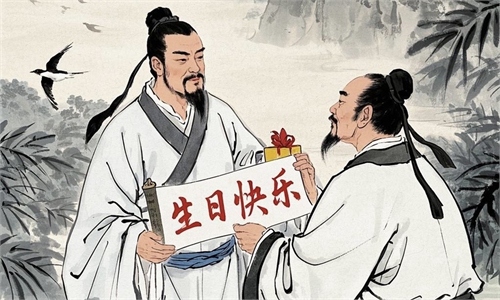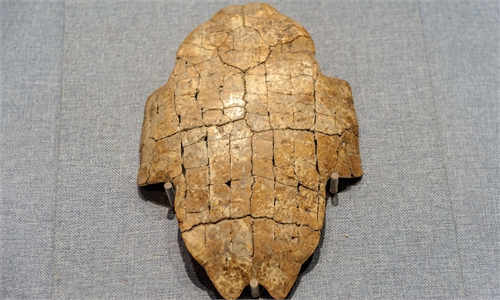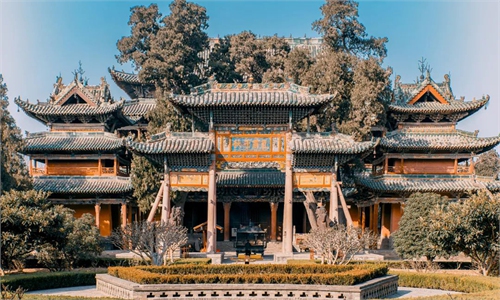ARTS / CULTURE & LEISURE
Vivid details in relics make for windows into the past

Illustration: Liu Xiangya/GT
Increasing evidence suggests that young Chinese audiences are less inclined to overlook the intriguing details of cultural relics. When Liang Xiao shared a photo online of a partially completed transcription of the renowned Chinese calligraphy piece Lanting Xu (Preface to the Poems Composed at the Orchid Pavilion), he did not anticipate the level of interest it would generate among netizens.The transcription, which consisted of only the first five characters and a doodle of a human face, is part of the Dunhuang manuscripts, which Liang discovered on the official website of the International Dunhuang Project. Upon seeing the five-character calligraphy transcription, the accompanying childish doodle and the caption "Kang Jingzong," Liang's imagination was immediately sparked.
"Was this the unfinished homework of a child? Did the child abandon it because their attention wandered or they simply forgot the remaining content? Was Kang Jingzong the child's name, or perhaps the name of another child reluctant to study?" he wondered.
"According to messages I received, most netizens have had similar thoughts as me," the content creator on the social media platform RedNote told the Global Times on Thursday.
Such vivid details hidden among cultural relics are far more than amusing trivia but also offer a glimpse into the daily lives and emotions of people who lived centuries ago, making history feel tangible and relatable.
As the British historian George Macaulay Trevelyan noted, "How fascinating history is - the long, variegated pageant of man's still continuing evolution of this strange planet, so much the most interesting of all the myriads of spinners through space." Younger Chinese generations have become more aware of how interesting and fascinating Chinese history can be when they pay attention to these lively details.
In the presence of this centuries-old unfinished "homework," the doodles of animals in the margins of Jixiong Shuyi (The Book of Omens and Rituals) - featuring tigers, horses, snakes and more - along with the humorous poems of a Tang Dynasty (618-907) student composed during lessons, have also captivated many netizens, prompting them to explore the historical stories behind these illustrations.
"As I read the amusing lines in the poems written by a child from the Tang Dynasty, I could hardly believe that this product of daydreaming in class dates back over 1,300 years. Though it is a glimpse into the past, it feels remarkably relevant to our lives today," Sina Weibo user Dadadabingan commented.
Almost every new discovery related to interesting details in these cultural relics can be included in trending topics on various Chinese social media platforms such as RedNote and Sina Weibo, which speaks to a larger trend: heightened enthusiasm for Chinese traditions and heritage. In recent years, younger generations in China have shown a renewed interest in exploring their cultural roots, driven by a combination of national pride, curiosity, and a desire to connect with their history in a meaningful way.
Younger generations are not merely spectators of history; they are actively rediscovering and reinterpreting their heritage in ways that resonate with their contemporary lives. The popularity of these small details, therefore, is not an isolated phenomenon - it is part of a larger movement to reclaim and celebrate Chinese traditions in accessible and engaging ways, Sun Jiashan, an associate researcher at the Central Academy of Culture and Tourism Administration, told the Global Times.
The fascination with these historical details does not just stop at social media. It also holds significant potential for academic research. Liang, who has zoomed in and focused on a series of details in Dunhuang manuscripts, has received messages from university students. These young researchers were inspired by the lively history showcased in the disdainful smile of a woman in an ancient painting, a letter from home to express concerns to the daughter who married and moved far away or complaints about trivia matters in life. They are trying to develop these details into academic research papers to explore deeper into Chinese history.
Liu Quanbo, a professor at Lanzhou University, has conducted a study on the doodles in Jixiong Shuyi, revealing that the drawings were not random but deliberate, reflecting cultural and social practices of the time.
This dynamic interaction between public interest and academic exploration creates a feedback loop. Public fascination with these historical "interesting sidelights" often inspires scholars to examine overlooked aspects of historical artifacts. In turn, academic findings enrich public understanding, adding depth to what might initially seem like a lighthearted discovery.
By balancing the academic rigor of studying historical artifacts with a focus on their lively, humanizing elements, scholars can make history more engaging and relevant to contemporary audiences.
Sun noted that more of these details will be uncovered in the future. This serves as an important catalyst for the creative transformation and innovative development of traditional Chinese culture in contemporary society. History becomes not just a static record of events but a living dialogue between generations - one that preserves the richness of civilization and ensures its relevance for the future.
The author is a reporter with the Global Times. life@globaltimes.com.cn




